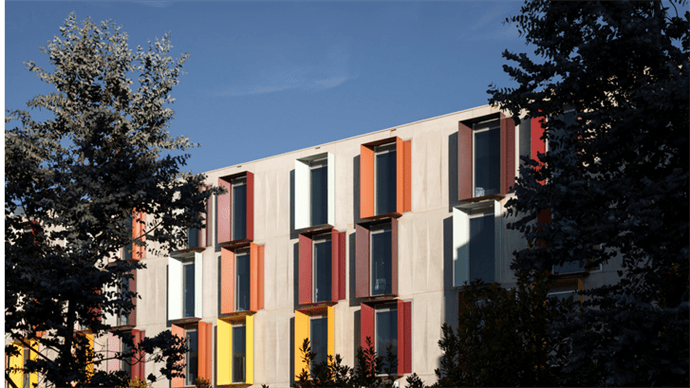BONARD, the student housing data specialist, has painted an upbeat assessment of the sector during the trade show in Cannes.
Unveiling its latest report, the firm said resilience had been proved given occupancy levels in purpose-built student accommodation (PBSA) were on average back to pre-pandemic figures in many countries.
Presenting the study’s key findings during an expert session, BONARD CEO Samuel Vetrak said: ‘The Covid pandemic did not have a damaging effect on the sector, it only confirmed the fundamental: that students still prefer to study on site.’
The data, collected by BONARD from 207 markets and submarkets, shows that three trends shaped the pastyear for the sector. On the positive side, increased tenant demand is fuelling investor demand, especially from institutional investors. The total volume of transactions in Europe reached €5.8 bn.
When investments are also taken into account, the total volume of capital movement exceeded €8.8 bn, including transactions and investments, excluding debt funding, fund raisings and loan provisions.
Vetrak said: 'Looking back at 2021, there were several key trends. We observed the performance of thesector, there were high occupancy rates and growing rents. It was confirmed once again that the studenthousing sector is a resilient and stable asset class, with counter-cyclical nature. This makes it very attractive for investors and developers.’ He explained how investment appetite had actually increased during the pandemic. ‘Students continue to travel to their destinations and appreciate the safe and convenient PBSA environment, services and amenities.’
RISING INFLATION
On the other hand, PBSA stakeholders are reporting the impact of rising inflation on materials and staff costs.
This has made it more difficult to develop new projects.
While some believe that this is an effect of the Covid pandemic, squeezing supplychains and driving up prices everywhere in the world, this is an issue that is front of mind for the sector.
Vetrak said: ‘The rising cost of materials and labour for new developments has had a considerable impact on asset capital expenditure. The Covid-19 prevention measuresimplemented in residences mirrored the additional costs of operating expenditure. Risinginflation across the market outpaced rent increases within the sector.’
Overall, BONARD found as of September 2021, the average occupancy rate in private PBSA stock in Europe stood at 94%. Overall, very high occupancy levels were seen in the Netherlands (99%), Belgium (99%), Poland (98%), Germany (97%) and France (95%).
The sector also saw over 50,000 student beds added in 2021, while 229,098 beds are still in the pipeline.
CEE countries and Southern Europe will keep generating strong investor interest in 2022, predicts BONARD, while the market in the rest of Europe undergoes consolidation.
This year will also see the sector moving more markedly towards asset hybridisation, with assets combining features from different sectors (for example, studentaccommodation and serviced apartments) to facilitate risk mitigation. Increased competition will also push the sector towards more targeted developments and toinvest in soft intelligence among prospective tenants.
The company said data showed that the strong focus on student housing from investors did not slow down from 2019.
This is especially true for institutional capital seeking to invest in large, established portfolios. But there is a catch – the market is not yet ready to accommodate it all. SaidVetrak: ‘There is a pent-up demand, especially from institutional capital. We see a challenge: there is not enough opportunity to deploy that capital.’
The total theoretically transactable value of student housing passed €103 bn, asrepresented by more than 740,000 beds embodied in portfolio assets, that is, excluding single assets.
Compared to Continental Europe, the UK exhibits a slightly higher share of portfolios made up of 10,000-plus beds. In Continental Europe, the most common portfolio size ranges between 1,500 and 4,999.






